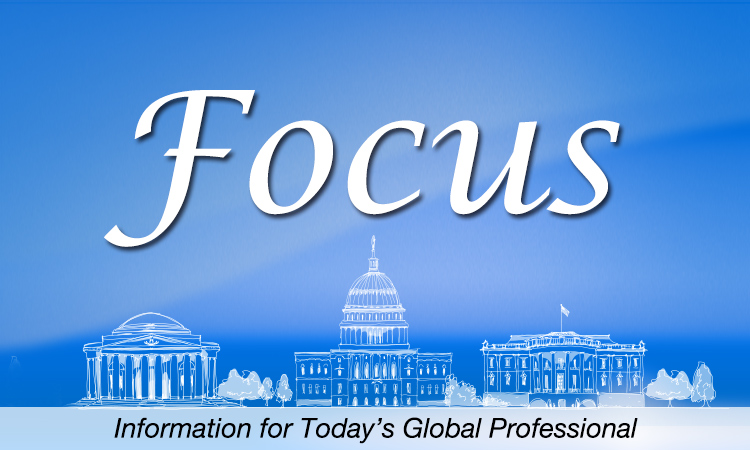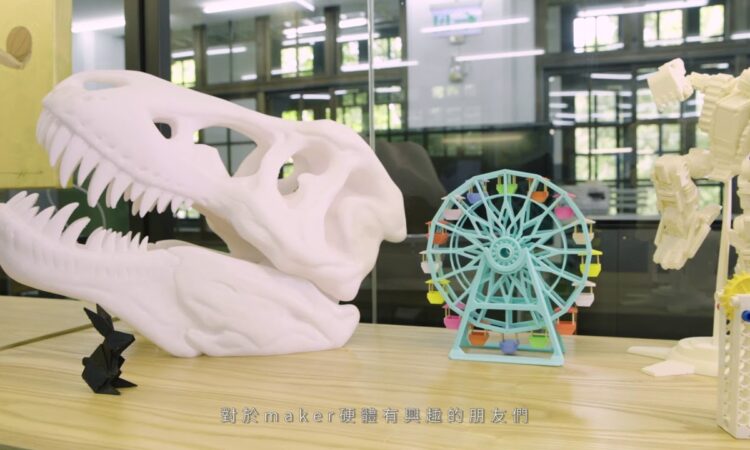如果您對下列項目有興趣,請與美國資料中心聯絡。電話:2723-3959 轉 202。
五月三十一日至九月三十 「立穩根基,共創未來:AIT@40 — 1979 年後美台關係展」
二二八國家紀念館
七月四日 (星期三) 美國獨立紀念日,放假
To receive or reserve any of these items, please contact Information Resource Center at 2723-3959, ext. 202 or aitirc@mail.ait.org.tw.
May 31 to Sept 30 “Strong Foundation, Bright Future: AIT@40, U.S.-Taiwan Relations Since 1979” exhibit at National 228 Museum.
July 4 (Wednesday) Independence Day. Closed.
1. 美國在台協會主席莫健 美國在台協會新館落成典禮致詞。
Remarks by Chairman James Moriarty at the Dedication Ceremony of the American Institute in Taiwan (AIT)’s New Office Complex. 
OT-1812, June 12, 2018, 2 pages.
“Today’s dedication ceremony for AIT’s new office complex is a milestone in the relationship that all of us here so deeply treasure. This occasion marks the remarkable journey that we have taken together since AIT was established by the Taiwan Relations Act in 1979.” (From AIT)
2. 美國在台協會處長梅健華美國在台協會新館落成典禮致詞。
Remarks by Director Kin Moy at the Dedication Ceremony of the American Institute in Taiwan (AIT)’s New Office Complex. 
OT-1811, June 12, 2018, 2 pages.
“I am deeply honored to be here today as Director of the American Institute in Taiwan to celebrate one of the grandest milestones in the history of AIT, the dedication ceremony of AIT’s new office complex in Taipei.” (From AIT)
3. 默色大使美國在台協會新館落成典禮致詞。
Remarks by Ambassador William Moser at the Dedication Ceremony of the American Institute in Taiwan (AIT)’s New Office Complex. 
OT-1814, June 12, 2018, 2 pages.
“Working closely with AIT we designed and built a modern, efficient and secure new facility that will support their important mission and work here. This project began with a vision for a new facility that would incorporate important security requirements, convey U.S. values, and be in harmony with the local environment.” (From AIT)
4. 教育文化事務助理國務卿瑪麗·羅伊斯美國在台協會新館落成典禮致詞。
Remarks by Assistant Secretary of State for Educational and Cultural Affairs Marie Royce at the Dedication Ceremony of the American Institute in Taiwan (AIT)’s New Office Complex. 
OT-1813, June 12, 2018, 2 pages.
“The New Office Complex is beautiful, and I want to congratulate the people who have worked tirelessly to turn this dream to reality. I also want to acknowledge that it represents much more than steel and glass and concrete. The New Office Complex is a symbol of the strength and vibrancy of the U.S.-Taiwan partnership in the 21st century.” (From AIT)
5. 美國在台協會處長梅健華 「2018 數位經濟論壇-數位時代的社會變遷」開幕致詞。 
Remarks by AIT Director Kin Moy at the Symposium on Social Innovation and Digital Transformation. 
OT-1813, June 12, 2018, 2 pages.
“The New Office Complex is beautiful, and I want to congratulate the people who have worked tirelessly to turn this dream to reality. I also want to acknowledge that it represents much more than steel and glass and concrete. The New Office Complex is a symbol of the strength and vibrancy of the U.S.-Taiwan partnership in the 21st century.” (From AIT)
6. Pompeo, Mike.
Secretary of State Remarks on America’s Economic Revival. 
The U.S. State Department, June 18, 2018, 9 pages.
“Economic diplomacy has always been central, when done right, to the State Department’s mission. What that means is we use American power, economic might, and influence as a tool of policy to help America achieve its interests and promote our values around the world.” (From the U.S. State Department)
7. Foreign Relations of the United States, 1969–1976, Volume XIX, Part 2, Japan,1969-1972.
The U.S. State Department, June 20, 2018.
“This volume provides material on the administration’s efforts to adapt the U.S.-Japan alliance in response to both an evolving bilateral context, with the strengthening of Japan’s political and economic institutions, and a changing international environment, in which the United States was seeking to reduce its military involvement in Indochina, to improve relations with the Soviet Union and the People’s Republic of China, and to realign an international economic system that had been created to address the challenges and concerns of the era following the Second World War.” (From the U.S. State Department)
8. 美利堅合眾國總統唐納德∙J∙特朗普與朝鮮民主主義人民共和國國務委員會委員長金正恩新加坡峰會聯合聲明。
Joint Statement of President Donald J. Trump of the United States of America and Chairman Kim Jong Un of the Democratic People’s Republic of Korea at the Singapore Summit. 
Share America, Jun 12, 2018, 2 page.
“President Trump and Chairman Kim Jong Un conducted a comprehensive, in-depth, and sincere exchange of opinions on the issues related to the establishment of new U.S.–DPRK relations and the building of a lasting and robust peace regime on the Korean Peninsula. President Trump committed to provide security guarantees to the DPRK, and Chairman Kim Jong Un reaffirmed his firm and unwavering commitment to complete denuclearization of the Korean Peninsula.” (From Share America)
9. Meick, Ethan and others.
China’s Engagement in the Pacific Islands: Implications for the United States. 
U.S.-China Economic and Security Review Commission, June 14, 2018, 36 pages.
“Since President Xi took office in 2013, Beijing has significantly bolstered its involvement in the Pacific Islands region, which comprises three U.S. territories and three countries freely associated with the United States that are important for U.S. defense interests in the Indo-Pacific. Much of China’s engagement in the region has focused on expanding economic ties with the Pacific Islands, but it has also increased its footprint in the diplomatic and security realms. This report examines China’s interests in the region, its comprehensive engagement in the Pacific Islands, and the implications of its expanding presence and influence for the United States.” (From U.S.-China Economic and Security Review Commission)
10. Monsen, Lauren.
美國-北韓外交簡史。 
Timeline of U.S.–North Korea Diplomatic History. 
Share America, Jun 8, 2018, 5 pages.
“This is a brief timeline of important events in U.S.–North Korean diplomatic history, focusing on security and arms control.” (From Share America)

11. Gale, William G. and others.
Effects of the Tax Cuts and Jobs Act: A Preliminary Analysis.
Brooking Institution, June 14, 2018, 48 pages.
“This report summarize the provisions of the bill and provide preliminary analysis of their effects. The authors also find that TCJA will stimulate the economy in the near term, but the long-term impact on gross domestic product (GDP) will be small. The impact will be smaller on gross national product (GNP) than on GDP because the law will generate net capital inflows from abroad that have to be repaid in the future.” (From the Brookings Institution)
12. Monke, Jim.
Farm Bills: Major Legislative Actions, 1965-2018. (PDF, 939KB) 
Washington, D.C.: Congressional Research Service, May 31, 2018, 11 pages.
“This report examines the major legislative milestones for the last 11 farm bills covering 53 years and illustrates trends that may provide useful background and context as the current farm bill debate proceeds.” (From CRS report)

13. Blume Susanna V. and Lauren Fish.
The Bottom Line: Analysis of the 2019 Defense Budget Request. 
Center for a New American Security, June 1, 2018, 36 pages.
“2019 presented a very rare opportunity for the Department of Defense to change the shape of the future joint force: the Trump administration has set a new strategic direction in its National Security Strategy and National Defense Strategy and received a significant influx of cash from Congress with which to implement these strategies.” (From Center for a New American Security)
14. DeSilver, Drew.
U.S. Population Keeps Growing, but House of Representatives is same size as in Taft era. 
Pew Research Center, May 31, 2018, 5 pages.
“The U.S. House of Representatives has one voting member for every 747,000 or so Americans. That’s by far the highest population-to-representative ratio among a peer group of industrialized democracies, and the highest it’s been in U.S. history. And with the size of the House capped by law and the country’s population continually growing, the representation ratio likely will only get bigger. In the century-plus since the number of House seats first reached its current total of 435, the representation ratio has more than tripled – from one representative for every 209,447 people in 1910 to one for every 747,184 as of last year.” (From Pew Research Center)
15. Bouchet, Max and others.
Global Metro Monitor 2018. (PDF, 16.1MB) 
Brooking Institution, June 2018, 48 pages.
“More than half the world’s population now lives in urban areas, and the 300 largest metropolitan economies in the world account for nearly half of all global output. The concentration of economic growth and prosperity in large metro areas defines the modern global economy, creating both opportunities and challenges in an era in which national political, economic, and societal trends are increasingly influenced by subnational dynamics. Understanding these large metro areas’ economic trajectory, which we measure through employment and GDP per capita measures, offers additional insights into the sources of growth that national or regional assessments tend to obscure.” (From the Brookings Institution)
16. Charap, Samuel and others.
Rethinking the Regional Order for Post-Soviet Europe and Eurasia.
Rand, June 13, 2018, 50 pages.
“This Perspective proposes a new approach to the regional order in post-Soviet Europe and Eurasia that would foster greater stability in the region and reduce dangerous tensions in Russia-West relations.” (From Rand)
17. Hibbs, Mark.
The Future of Nuclear Power in China. 
Carnegie Endowment for International Peace, May 14, 2018, 147 pages.
“China is on course to lead the world in the deployment of nuclear power technology by 2030. Should it succeed, China will assume global leadership in nuclear technology development, industrial capacity, and nuclear energy governance. (From Carnegie Endowment for International Peace)

18. Wasserman, Todd.
The Impact of Technology: How it’s Changing Rural and Suburban America. 
Northrop Grumman Corporation, May 31, 2018, 2 pages.
“The impact of technology continues to be felt in our everyday lives, but nowhere is more evident than in our choice in where to live. These days, if you have tech skills, you can work anywhere you want — including from home. That’s good news for people living outside city centers” (From Northrop Grumman Corporation)
19. Minevich, Mark .
Four Steps To Reignite Innovation And Secure The Future Of Work In America.
Forbes, May 30, 2018, 3 pages.
“The greatest threat to the American workforce is not automation. It is not the digital revolution. It is the stagnation of innovation. If the U.S. continues on its current trajectory it will be surpassed by China and Russia before the next generation. As of now, this is a threat, but if we do not act soon, it will mark the extinction of the American workforce as we know it.” (From Forbes)
















![Video Thumbnail [Recovered]-01](../wp-content/uploads/sites/269/Video-Thumbnail-Recovered-01-1-750x450.jpg)









